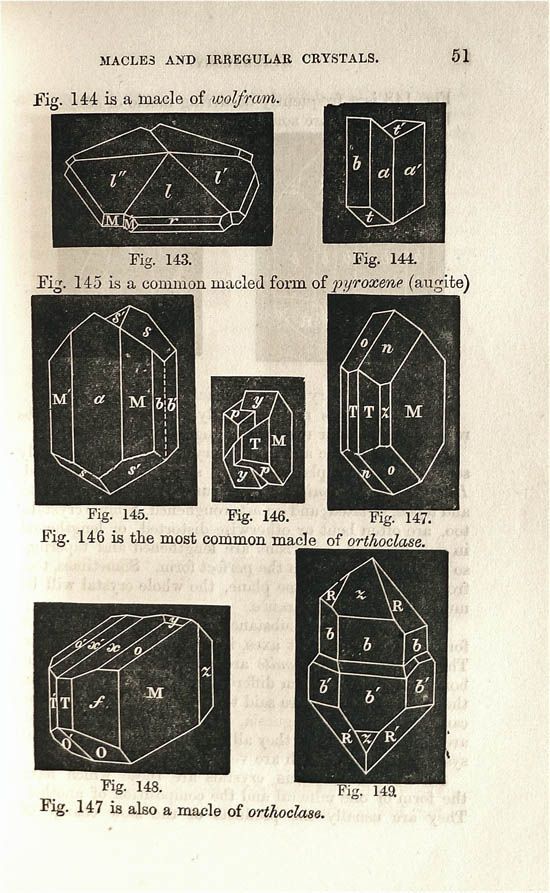#crystallography
Text

Loving how the gateway portals to the different Shatterverses, which formed due to the shattering of Paradox Prism, are surrounded by the Hexagonal Prismatic crystal structures.
I hated studying mineralogy but this is one perk of it that I like. The structures surrounding those portals are literally the most basic crystal forms in Triclinic Prismatic Class and the main form of Hexagonal Prismatic Class.

And if you see the whole Prism, it is of Triclinic Prismatic structure! (Mineralogists would be able to see it better but the purple shard makes it more clear, look at how it has six prismatic surfaces, it looks like a honeycomb with unequal angles.)


Like, the attention to detail and the research done for this series is just *Chef's kiss*
#sonic the hedgehog#sonic#sonic prime spoilers#sth#minerology#crystallography#they took care to make them as such because breaking a prism shattered into a a million pieces alongside main ones but#but if broken down to the crystal structure. it would be hexagonal prismatic#genius#sonic prime
34 notes
·
View notes
Photo

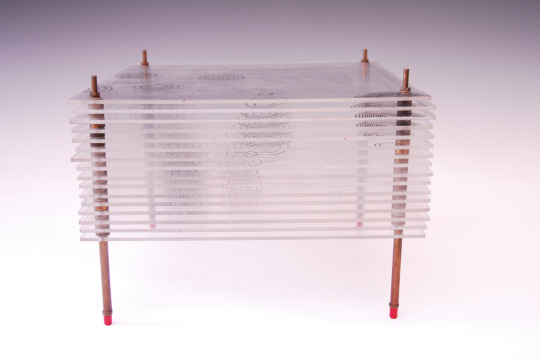
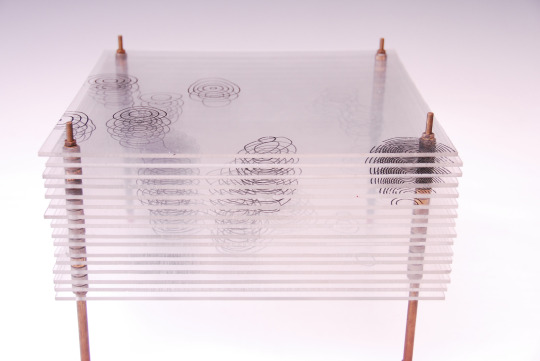
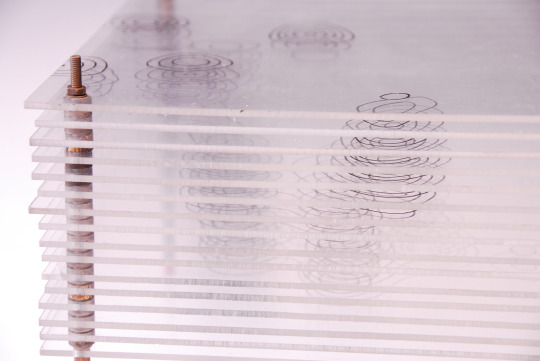



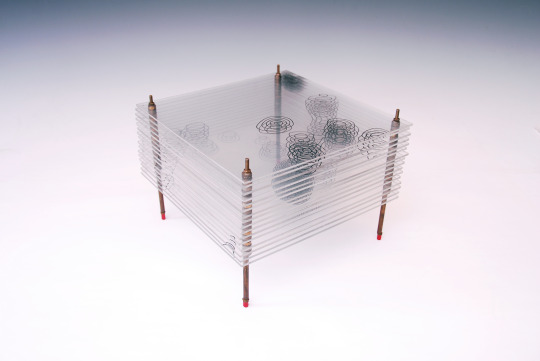
Model of the Structure of Penicillin, by Dorothy Crowfoot Hodgkin, Oxford, ca. 1945 [Based on X-ray crystallography work by Dorothy Crowfoot Hodgkin and Barbara Wharton Low (Oxford) and C. W. Bunn and A. Turner-Jones (I.C.I. Alkali Division, Northwich)] [© History of Science Museum, University of Oxford, Oxford]
#chemistry#x ray crystallography#crystallography#geometry#pattern#structure#dorothy crowfoot#dorothy crowfoot hodgkin#barbara wharton low#barbara low#c. w. bunn#a. turner jones#history of science museum#1940s
129 notes
·
View notes
Text
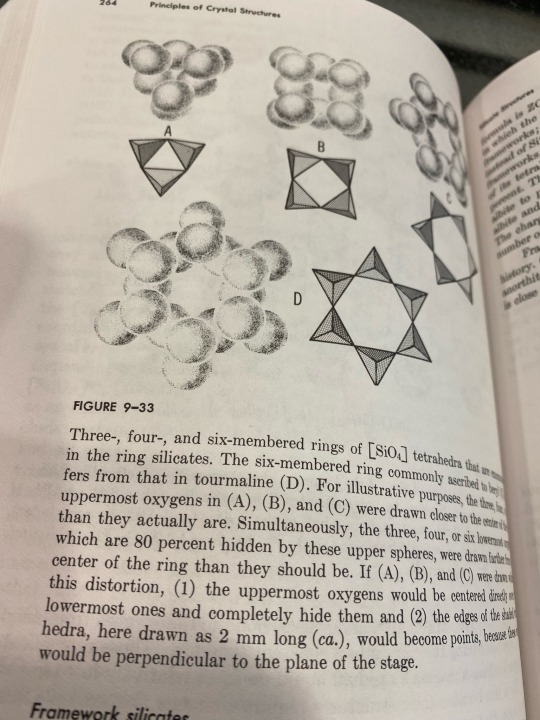
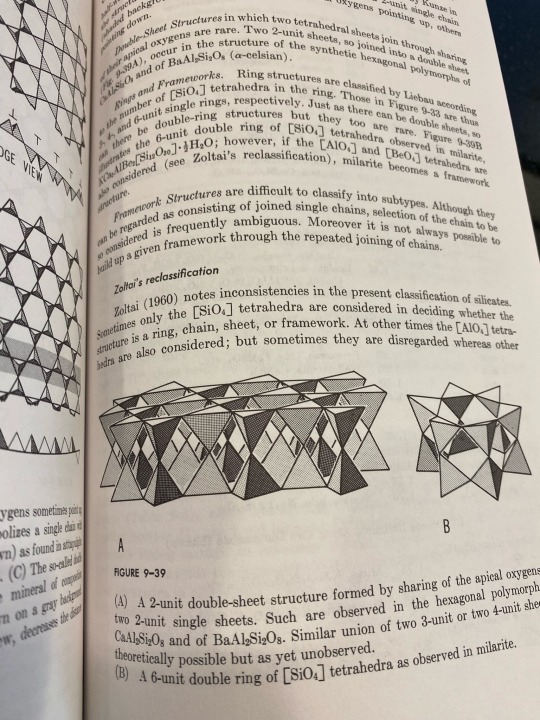


Some heavy ass reading that is highly intriguing
2 notes
·
View notes
Text


↬ BEfORE & AfTER ↫
Prior to leaving town for the holidays, we had taken some time to install some new lights in the shop~💡✨
My partner definitely took the lead here and I could not have done it without his help! I don’t think he’s ever done an installation job like this & I am very proud of his handiwork 🥰
What do you think?
Stop by to see them in person, if you’re local to the Tampa Bay area! Or, check out our shop page on Instagram
#crystal shop#crystals#lighting#light design#crystal jewelry#handmade jewelry#jewelry#fossils#minerals#gemstones#gems and minerals#crystal addict#calcite#fluorite#quartz#amethyst#geology#geologist#crystallography#spirituality#new age#alternative healing#alternative therapy
2 notes
·
View notes
Text
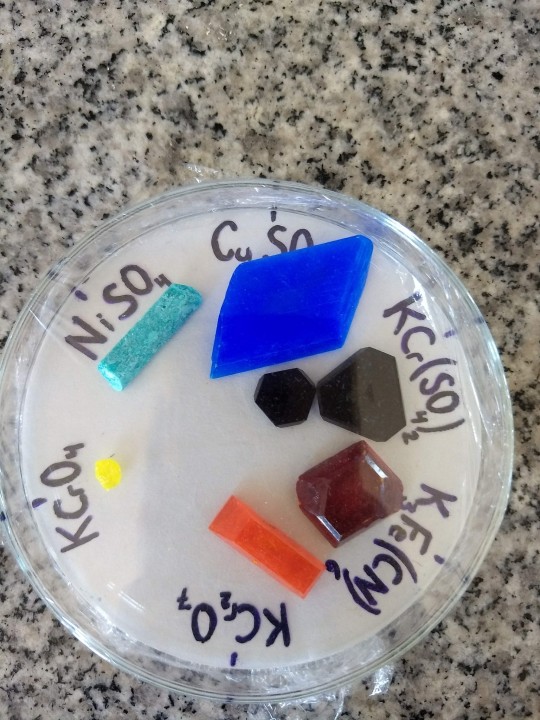
Highschool memories: beautiful and highly toxic monocrystals for my Infinity Gauntlet project in my last year of highschool. Literally one of the best projects I did along the crystallized skull.
*Took too long to take the photo so that's why the nickel one is oxidized 😅
3 notes
·
View notes
Text
Help me figure out what type of stone this is!!!!
i found this small pebble which is grayish/ whitish with black/ gray spots at a freshwater lake in jew jersey. i have tried to identify it but have had no lick, i’m super curious.
thanks in advance!


#stones#rocks#nature#crystals#pebbles#minerals#identify#freshwater#petrology#crystallography#rock collection#rock collector#help
2 notes
·
View notes
Text
An inside look into the Powerhouse of the Cell
This publication highlight is part of the SBGrid/Meharry Medical College Communities Project, focused on science education and demonstrating how structural biology and preclinical science connect to medicine.
Mitochondria are the powerhouses of the cell. We’ve all heard this phrase at some point in our lives, but what does it mean on a molecular level? A mitochondrion is an organelle in cells like animals, plants and humans that functions to provide the cell with energy in the form of a molecule called adenosine triphosphate, or ATP. A sufficient stock of ATP is produced in mitochondria when cells in our body convert food into energy, or what is known as cellular respiration. More specifically, cellular respiration is when our cells take in glucose and oxygen through many steps and then release carbon dioxide, water, and energy. An important step is to store this energy into a form that can be used in different parts of the cell when needed. This is done by moving electrons (really small particles that are a part of atoms) by a group of biomolecules called proteins. These proteins come together to form an electron transport chain. As the name suggests, the electron transport chain is a series of processes where electrons are transported from one molecule (donor) to another molecule (acceptor) resulting in the formation of ATP. For the electron transport chain to work, it relies on electron donor molecules produced from the Krebs cycle, also known as the citric acid cycle.
The Krebs cycle is a metabolic pathway in the mitochondria that allows our bodies to break down carbohydrates to be used for energy. This process starts with pyruvate entering the system and, after several steps, ends with the production of several molecules such as, ATP, NADH, and FADH2. These important molecules enter the electron transport chain acting as electron donors to make more ATP. CO2 is also produced from the Krebs cycle and enters other metabolic pathways. All of the steps in the Krebs cycle are carried out by different enzymes. One of the enzymes is succinate dehydrogenase (SDH). As a member of the electron transport chain in mitochondria, SDH or complex II, catalyzes the formation of fumarate from succinate- releasing FADH2 as a byproduct. SDH produces a fraction of the total ATP, but is important for a wide range of cellular activities, such as suppressing tumor growth and neurological development. Although the importance of SDH has been widely established, what is unknown are the details of how the regulation of SDH assembly factors (SDHAF) and SDH assemble into a functional unit.

Left: structure of SDHA-SDHAF2-SDHAF4 assembly intermediate (PDB: 8DYD). Green: SDH, purple: SDHAF4, orange: SDHAF2.
Right: structure of SDHA-SDHAF4 assembly intermediate (PDB: 8DYE). Green: SDH, orange: SDHAF4. CC BY SBGRID.
To address this question, SBGrid member Tina Iverson investigated the intermediate complexes formed by the SDHAF subunits and cofactors. Through the use of cellular studies and biochemical experiments, along with X-ray crystallography and NMR for structural studies, the authors were able to map out the different intermediate complexes that lead to the formation of the fully matured SDH. Interestingly, the authors found that regions of the assembly proteins can transition from ordered (a protein with a secondary structure) to disordered (a protein with no secondary structure) and that this change is important for the transfer between intermediate complexes. These results shed light on the previously unknown steps of the formation of a mature and functional complex II of the electron transport chain.
Read more in Nature Communications.
KeAndreya Morrison, Meharry Medical College

0 notes
Text
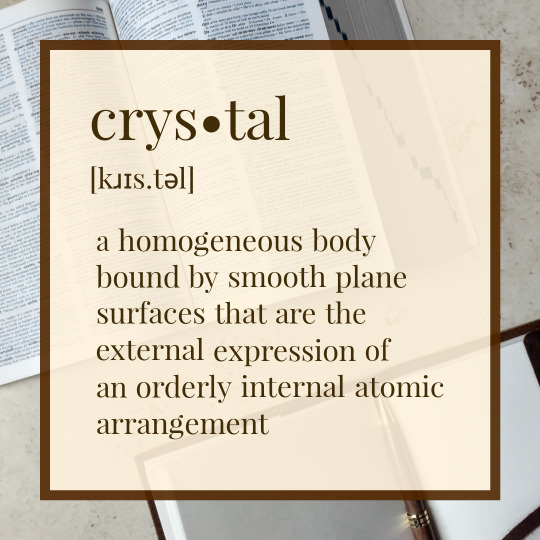

Today is the first lesson on crystallography!
This time around I wanted to start off right by defining some important terms we will use throughout the crystallography section.
Crystallography is the study of crystals which includes natural and synthetic crystals. Remember that a mineral must be the product of natural processes; therefore, the complete scope of crystallography extends beyond the bound of minerology.
A crystal is a homogeneous body bound by smooth plane surfaces that are the external expression of an orderly internal atomic arrangement. This definition means a crystal (1) has faces and (2) has an orderly structure on an atomic level.
Crystalline is the adjective used by mineralogists to describe materials that have orderly internal atomic arrangement, but no faces. Although we will be utilizing the above nomenclature, it is also beneficial to know that physicists use "crystal" to mean any substance that has an orderly internal atomic arrangement regardless of whether or not the substance has faces. They also use additional terms to capture the nuances of crystals. A crystalline solid with well-formed faces is called "euhedral". If the same solid has imperfectly formed faces, it is called "subhedral", and if it has no faces, it is called "anhedral".
There are more terms we will need for further study of crystallography, but since this post is already vocabulary dense, I will define them next week - in sha Allah.
SaroSaguaro.etsy.com
0 notes
Text
PRINCIPLES OF CRYSTALLOGRAPHY AND ELECTRON MICROSCOPY AS APPLIED TO BIOLOGICAL MATERIAL
Crystallography and electron microscopy are essential tools in the study of biological materials, providing detailed insights into the structure and function of biological molecules. These techniques have revolutionized our understanding of biological systems by allowing scientists to visualize the intricate details of macromolecular structures at atomic or near-atomic resolution.
1)…

View On WordPress
0 notes
Text
managed to get a glimpse of some of the original crystals that Wilhelm Körmer synthesised for himself back in the early 1900s
#he used to work as part of kekulé's team so they're almost all aromatic based#still pretty though#crystallography#ochem
1 note
·
View note
Text
The crucial techniques – crystallography, chromatography, radioactive tracers, the ultra-centrifuge – were all being developed.
"Frankenstein's Footsteps: Science, Genetics and Popular Culture" - Jon Turney
#book quote#frankenstein's footsteps#jon turney#scientific technology#scientific developments#crystallography#chromatography#radioactive tracer#centrifuge
1 note
·
View note
Text
Each of these beamlines is dedicated to the specific purposes outlined in the table below.

"Chemistry" 2e - Blackman, A., Bottle, S., Schmid, S., Mocerino, M., Wille, U.
#book quotes#chemistry#nonfiction#textbook#synchrotron#beamline#crystallography#diffraction#x ray#scattering#spectroscopy
1 note
·
View note
Photo
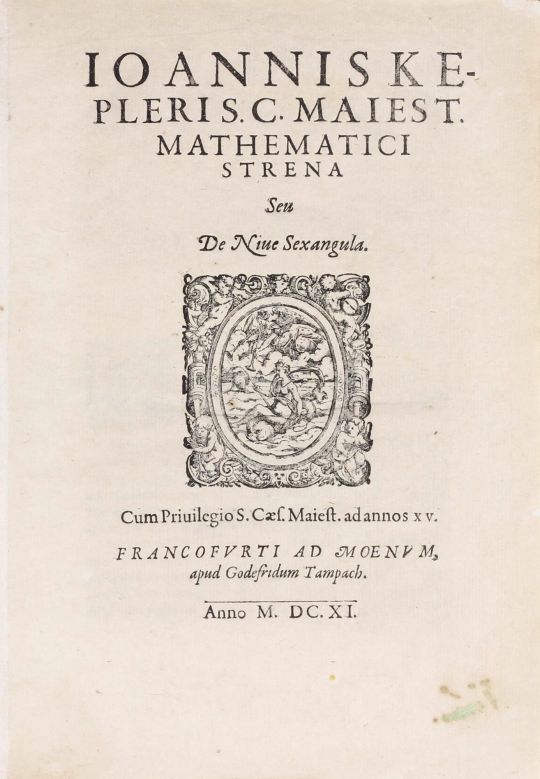








Johannes Kepler, December 27, 1571 / 2022
(images: Johannes Kepler, Strena seu de Nive sexangula, Godfried Tampach, Frankfurt am Main, 1611. Milestones of Science Books, Ritterhude)
#graphic design#crystallography#mathematics#kepler conjecture#book#cover#book cover#johannes kepler#birthday anniversary#godfried tampach#1570s#1610s#2020s
25 notes
·
View notes
Text
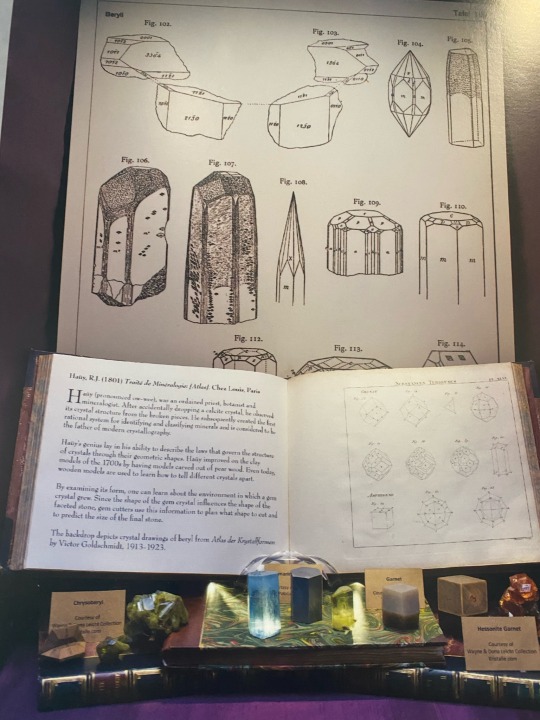
1 note
·
View note
Text
X-ray Crystallography - Selvita
X-ray Crystallography We offer crystallography services from protein production and crystallization to data collectionand structure determination, with streamlined protocols and guaranteed reproducibility. State-of-the-art crystallographyequipment Gryphon nano dispensing crystallization robot Crystal imaging microscopes and cameras Specialized tools for crystal handling International team of highly skilled scientists with proven scientific record Solved over 170 high-resolution structures Delivered.

0 notes
